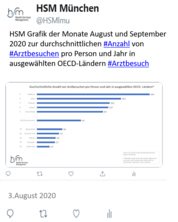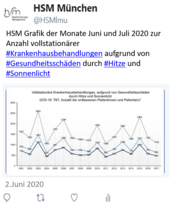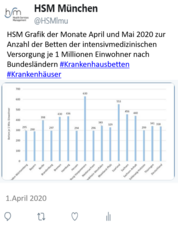Variation in antibiotic prescriptions: is area deprivation an explanation? Analysis of 1.2 million children in Germany.
| Autoren/Herausgeber: |
Koller, D. Hoffmann, F. Maier, W. Tholen, K. Glaeske, G. Windt, R. |
|---|---|
| Erschienen: | 2013 |
| Publikationsart: | Articles in Refereed Journals (International) |
| ISBN/ISSN: | 0300-8126 |
| erschienen in: | Infection |
| Weitere Quellenangabe: | Volume 41(1), Pages 121-127 |
Abstract
Purpose
Inadequate use of antibiotics can lead to problems such as resistance. Overuse is especially a problem for children, since they are more affected by acute (often virus-caused) infections. While the problem has been addressed internationally over the past several years, regional variations in prescriptions are striking. Therefore, the present study aims to analyze regional variations in antibiotic prescription on a district level in Germany and tries to identify reasons for those variations through adding possible influencing factors to the analysis on individual and district levels.
Methods
We analyzed 1.2 million children insured in a German health insurance fund. Antibiotic prescriptions were quantified in 2010 and reasons for prescriptions were analyzed in multilevel regressions based on the district of residence, regional deprivation, and age and sex of the child.
Results
Thirty-six percent of all children aged 0–17 years received an antibiotic prescription in 2010. In the south, prevalences are generally lower, and also to the very north. The highest prevalences are found in the close-to-border districts in the west, as well as in a band throughout the middle of Germany, in rather low population density areas. Regional variation in the prevalence range from 19 to 53 % between districts. Regional deprivation can explain part of this variation.
Conclusions
Including area deprivation measures helped identify an influence of especially regional income and occupational deprivation on antibiotic prescriptions for children. Regional analysis such as this can help identify specific regions and groups of persons to address information programs on the risks of preventable antibiotic consumption and alternative treatment methods.





